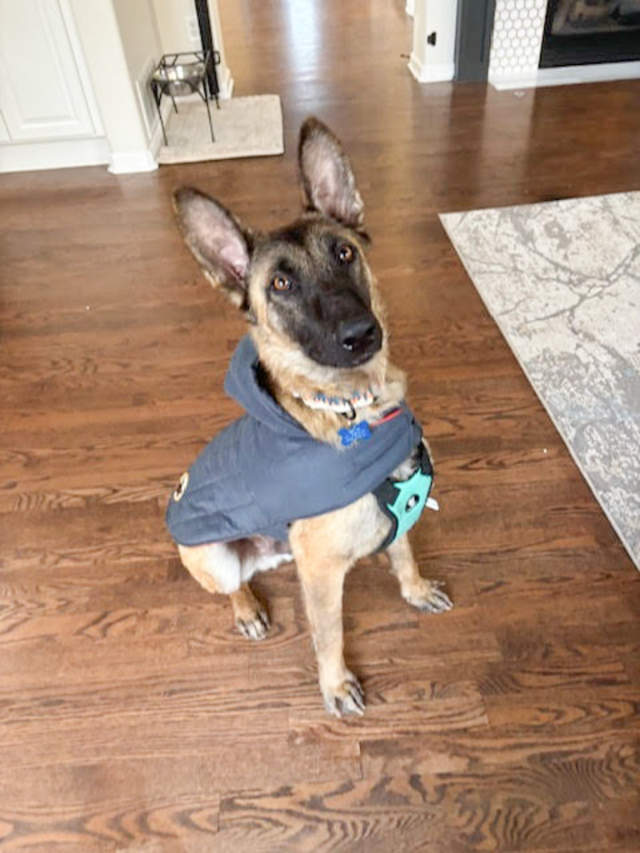Summer 2012
How Does Knowing “Sit” Help Thee?
Let Me Count the 20 Ways!
(For ease of explanation, I will be using male gender pronouns when describing “your” dog)
First, let me begin by specifying the type of “sit” I mean. I’m not talking about the kind where you ask your dog for a “sit” and he sits then bounces right back up. I am talking about a “sit” where he sits and waits for you to release him (see the GSROR June 2011 TTT article about the importance of a release word.) The “sit” can be right next to you or from a distance. You might be thinking to yourself, “Teaching a dog sit has got to be one of the most boring tricks there is. Why get all excited about it?” I’ll tell you why……Ready?
- It’s super easy to teach.
- Just about everyone, even those unfamiliar with dogs, knows that “sit” is a common behavior they can ask a trained dog to do to make a connection.
- You can have your dog sit to greet people, so he does not jump up on them. This is especially helpful with big dogs greeting children. (Hard to jump, if you are holding a sit.)
- Your dog can sit before going outside or exiting a car, so he does not charge out into traffic.
- Sitting is a very polite way for your dog to wait before being fed.
- How about a “sit” at the top or bottom of the stairs to avoid the dreaded “having your feet knocked out from under you.”
- Ask for a “sit” before throwing a toy or ball to challenge your dog mentally while challenging him physically.
- Do you ever feel like you are one of the three stooges when going through doorways with your dog? Ask for a “sit” and cross the threshold with space to move.
- Getting weighed at the vet clinic should be easier with a “sit” on the scale.
- Speaking of the vet clinic, the doctor and staff would be so thankful if they could check your dog out while holding a “sit”, instead of chasing him around the examining room.
- If your recall is not as strong as your “sit” command, call to your dog to “sit” from a distance if he is running about and not coming to you. Now, you can approach him.
- Trying to get that perfect family photo? Your dog might just be the stillest one of the bunch while holding a “sit.”
- If someone is nervous about meeting your dog, having your dog in a sustained “sit” can be less threatening to them.
- And if your dog is nervous about meeting new people, having the new person ask for a “sit” and give your dog a treat for sitting might help your dog feel a little less unsure.
- Imagine you are trying to bring groceries in from your car? Wouldn’t it be easier if you could prop your door open and know that your dog will sit there and watch you bring in the bags of food? Of course, it would be even better if he could help you bring them in!
- It’s easier to pay at the cash register at your local pet food store, if your dog is in a sit next to you. (I have personally experienced the opposite with a dog that ran to greet another dog entering the store while the leash was on my wrist. My money and purse went flying!)
- Carrying something fragile? Ask for a “sit” so your dog does not knock, right out of your hands, the rare, priceless vase your Great Auntie just sent you from Timbuktu.
- You can ask for a “sit” before you open the hot oven, so your dog does not stick his nose in.
- A glass jar just fell and shattered all over the floor. Ask for a “sit,” while you carefully clean up the sharp, slivers of glass.
- A “sit” can help leashing up or taking off the leash go much quicker.
Could I think of more? Oh, yes. You might have even discovered some situations in your own life when having a dog who knows “sit” has or would come in handy. So, let’s not underestimate the importance of teaching your dog to hold a “sit.” Ask for it often and reward it always-with a treat, a pat or some praise.
Content Copyrighted 2012. Tracey Derheim. All Rights Reserved.

